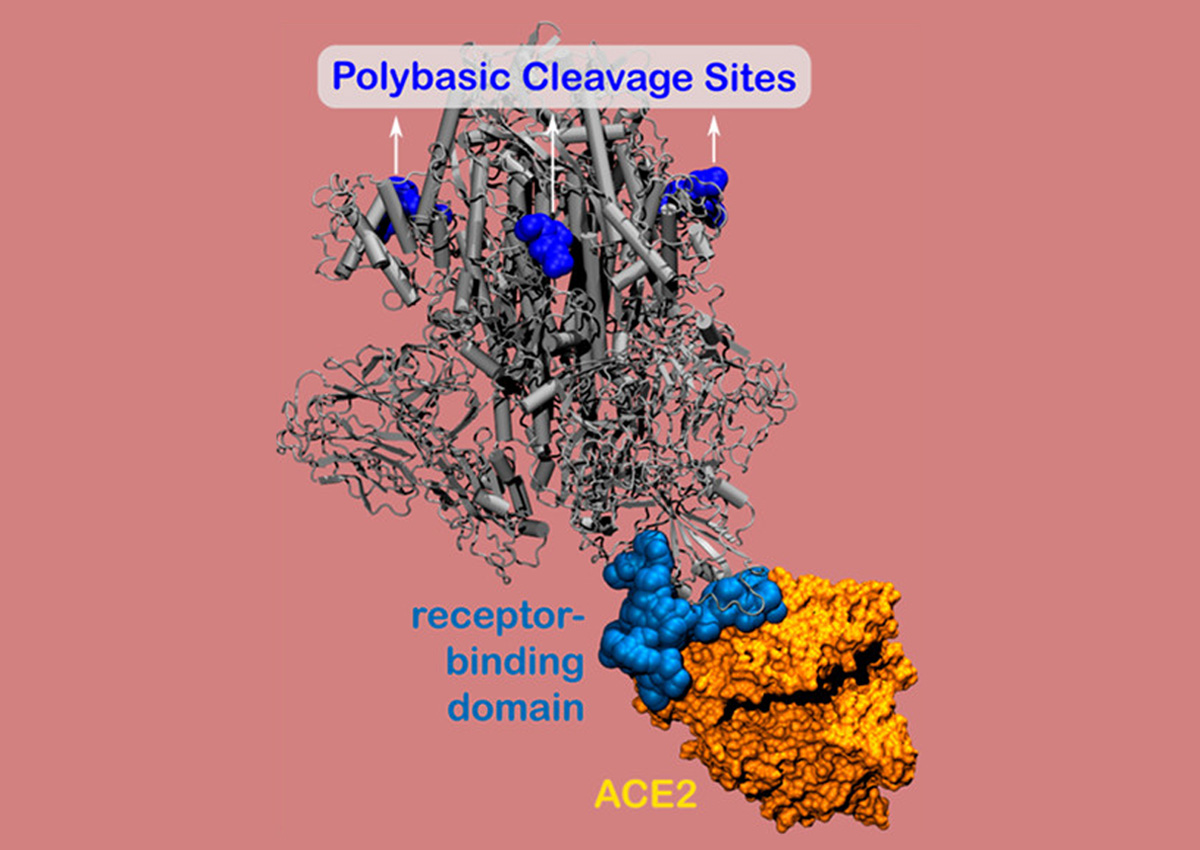
Researchers Discover Vulnerability in SARS-CoV-2
August 19, 2020| |
Researchers from Northwestern University have identified a new vulnerability in the SARS-CoV-2's spike protein, illuminating a relatively simple, potential treatment pathway. The spike protein contains the virus' binding site which adheres to host cells and enables the virus to enter and infect the body. The researchers discovered a site on SARS-CoV-2 that affects binding to human host cells.
Using nanometer-level simulations, the researchers discovered a positively charged site, known as the polybasic cleavage site, located 10 nanometers from the actual binding site on the spike protein. The positively charged site allows strong bonding between the virus protein and the negatively charged human-cell receptors. The researchers then designed a negatively charged molecule to bind to the positively charged cleavage site. Blocking this site inhibits the virus from bonding to the host cell.
Made up of amino acids, the novel coronavirus's polybasic cleavage sites have remained elusive since the COVID-19 outbreak began. Previous research indicates that these mysterious sites are essential for virulence and transmission. Northwestern's Monica Olvera de la Cruz's and Baofu Qiao's discovery of the location of the polybasic cleavage provided unexpected insight.
For more details, read the article in Northwestern Now.
| |
You might also like:
- Study Finds SARS-CoV-2 Has Six Strains
- International Team of Researchers Identify Evolutionary Origins of SARS-CoV-2
- Researchers Discover Antibody that Blocks SARS-CoV-2 Infection in Cells
Biotech Updates is a weekly newsletter of ISAAA, a not-for-profit organization. It is distributed for free to over 22,000 subscribers worldwide to inform them about the key developments in biosciences, especially in biotechnology. Your support will help us in our mission to feed the world with knowledge. You can help by donating as little as $10.
-
See more articles:
-
News from Around the World
- Evidence Shows GM Foods Do Not Cause Infertility
- Scientists Decode Complete Sequence of Human Chromosome X for the First Time
- Groups Push for Bt Brinjal Field Trials in India
- Europeans Now Less Skeptic About GMOs
- Wheat Gene Confers Stem Rust Resistance to Barley
- New Biofortification Method Transforms Leaves into Nutrient Stores
-
Research Highlights
- Study Shows Fate of Multiple Bt Proteins from Bt Maize in the Predatory Lady Beetle
-
Plant
- CRISPR-Cas RNA Targeting Using Transient Cas13a Expression in Nicotiana benthamiana
- Yield10's CRISPR Genome-Edited C3007 Canola Trait in 2021 US Field Tests
-
Health
- Researchers Discover Vulnerability in SARS-CoV-2
- Q&A: COVID-19 Pandemic's Impact on Food and Agriculture
- Team of Experts Develop Nasal Spray Against COVID-19 Virus
-
Read the latest: - Biotech Updates (November 12, 2025)
- Gene Editing Supplement (October 29, 2025)
- Gene Drive Supplement (February 22, 2023)
-
Subscribe to BU: - Share
- Tweet

